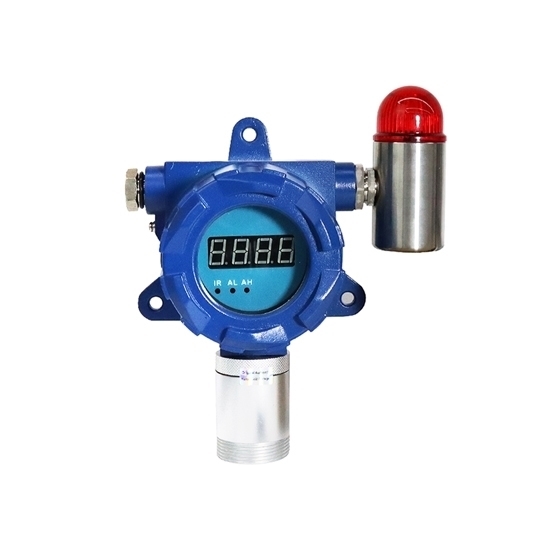
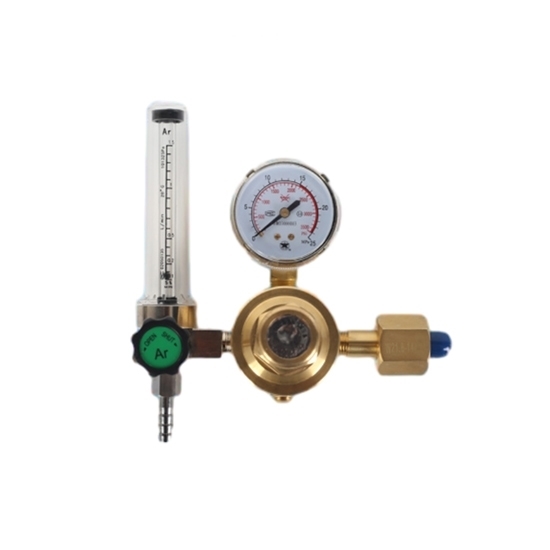
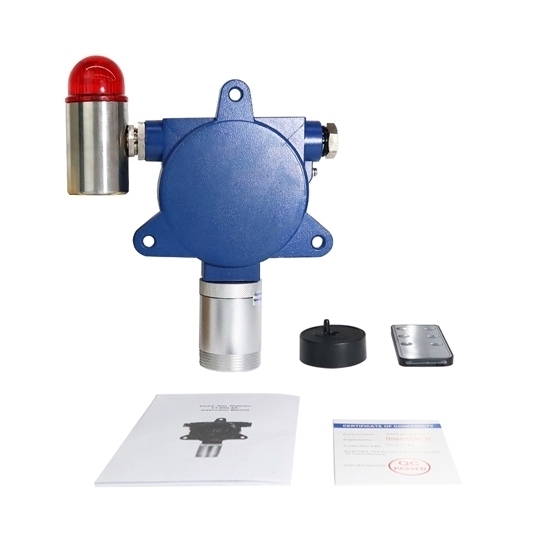
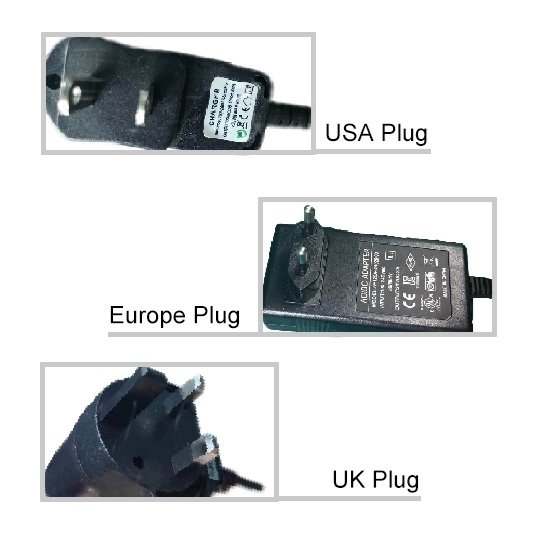
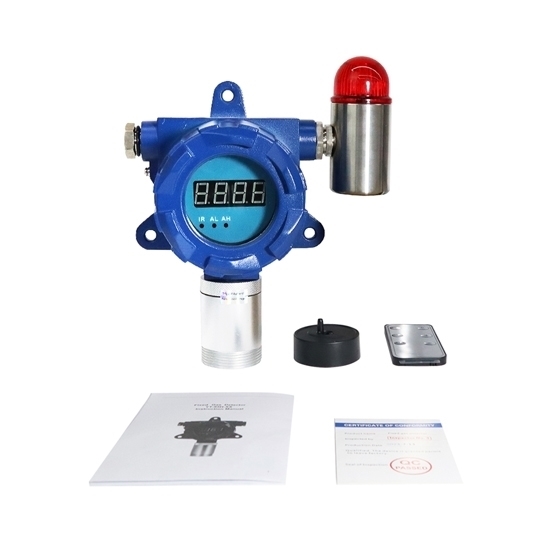
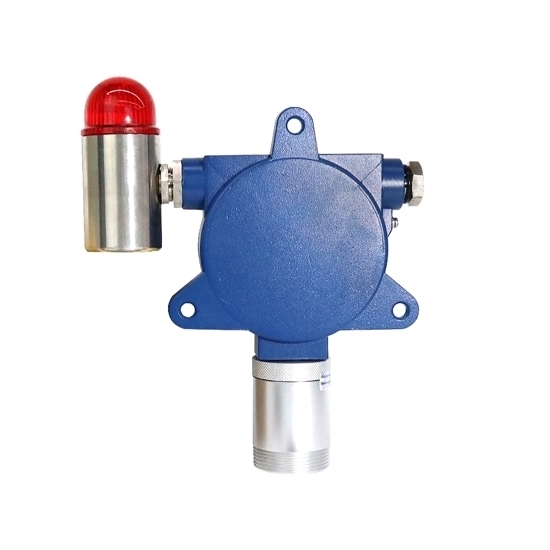
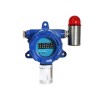
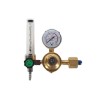
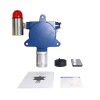
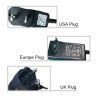
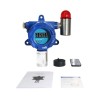
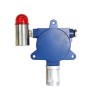
- Stock: In Stock
- Model: GD300-H2
- Weight: 1.00
- SKU: GD300-H2
Available Options
Fixed gas detector from reliable manufacturer, applicable gas hydrogen. Detecting range 0-1000/2000/5000/10000 ppm, real time display, sound and light alarm, remote control, output signal 4-20mA and RS485. H2 gas detector for detecting and monitoring hydrogen leak in 24 hours, small size, high reliability, acceptable price.
Features
- Hydrogen gas detector adopts high precision sensor for accurate gas leak detection.
- Hydrogen gas detector is equipped with 3-wire system 4-20mA analog output, relay output, RS485 output (optional).
- The H2 gas detector is compatible with various controlled alarms, PLC, DCS and other control system, and can be remote monitored.
- Explosion-proof design, fast, relaible and stable.
- Infrared ray controller can remote control the alarm point settings, zero calibration, and address modification.
- Two-stage alarm with sound and light, and the alarm point is settable.
- The hydrogen gas detector has self-calibration function, and three standard keys will be used to realize on-site maintenance.
- The H2 gas detector can output one or two on-off signals, can drive ventilator, solenoid valve or other external devices.
Specification
| Model | GD300-H2 |
| Detection Principle | Electrochemistry (0-10/20/500/1000/2000/5000/9999ppm, 0 to 2%/4% VOL), Catalytic Combustion (0-100% LEL) |
| Gas | Hydrogen (H2) |
| Range (Optional) | 0 to 500ppm, 0 to 1000ppm, 0 to 2000ppm, 0 to 5000ppm, 0 to 9999ppm, 0 to 2% VOL, 0 to 4% VOL, 0-100% LEL |
| Resolution | 0.1ppm (0-10/20ppm), 1ppm (0-500/1000/2000/5000/9999ppm), 0.001% VOL (0-2% VOL, 0-4% VOL), 1 %LEL (0-100% LEL) |
| Calibration Kit | Gas pressure regulator (calibration gas cylinder NOT included) |
| Accuracy | ≤±3% F.S. |
| Response Time | ≤10s |
| Repeatability | ≤±1% |
| Recovery Time | ≤10s |
| Linearity Error | ≤±1% |
| Zero Shift | ≤±1% (F.S./year) |
| Signal Output (Optional) | 4-20m and RS485 Relay output: one group of relay output (1NO+1NC, 24V 100mA) for one alarm (default), or two groups of relay output (2NO+2NC, 24V 100mA) for high/low alarm (optional). |
| Alarms | Sound, light |
| Display | High light nixie tube display |
| Installation | Wall-mounted, piping type, flow-type (according to the detected environment) |
| Connection | Power connection type: G1/2 male thread explosion-proof flexible pipe Pipe-mounted type: M45*P2.0 |
| Operating Time | 24h |
| Explosion-proof Grade | Ⅱ 2G Ex ia Ⅱ CT4 Ga |
| Protection Grade | IP65 |
| Certification | CE, ATEX (Standard: EN IEC 60079-0:2018, EN 60079-1:2014) |
| Working Voltage | 12-36V DC |
| Case Material | Die-casting aluminum housing |
| Operating Temperature | -20℃~50℃ |
| Operating Humidity | 0~95%RH (non-condensing) |
| Dimension | 206*179*90mm |
| Weight | ≤1.6kg |
| Accessories | Power adapter: Input 100-240VAC 50/60Hz, Output 24VDC 1A (Optional USA plug, Europe plug or UK plug) |
Note: To measure confined spaces such as pipelines, please contact us and inform the detailed conditions of use.
Fixed Hydrogen (H2) Gas Detector Dimension (Unit: mm)
***Other Common Gases and Ranges Available for Fixed Gas Detectors
| Gas Type | Measure Range | Resolution |
| Ammonia (NH3) | 0-50/100/200/500/1000/2000/5000ppm | 0.01ppm/0.1ppm/1ppm |
| Benzene (C6H6) | 0-1/10/50/100/200/1000/2000/5000/10000ppm | 0.001ppm/0.01ppm/0.1ppm/1ppm |
| Carbon Dioxide (CO2) | 0-1000/2000/5000/9999ppm, 0-2/5/10/20/25/30/50/100%VOL | 0.1ppm/1ppm/0.001%VOL/0.01%VOL/0.1%VOL |
| Carbon Monoxide (CO) | 0-10/20/50/100/500/1000/2000ppm | 0.01ppm/0.1ppm/1ppm |
| Chlorine (Cl2) | 0-5/10/20/50/100ppm | 0.001ppm/0.01ppm/0.1ppm |
| Chlorine Dioxide (ClO2) | 0-1/5/10/20/50/100ppm | 0.001ppm/0.01ppm/0.1ppm |
| Combustible Gas (EX) | 0-100%LEL | 1%LEL |
| Ethylene (C2H4) | 0-10/20/50/100/500/1000/2000ppm | 0.01ppm/0.1ppm/1ppm |
| Formaldehyde (CH2O) | 0-10/20/50/100/500/1000ppm | 0.01ppm/0.1ppm/1ppm |
| Hydrocarbons (HC) | 0-100%LEL | 1%LEL |
| Hydrogen (H2) | 0-10/20/500/1000/2000/5000/9999ppm, 0-2/4% VOL, 0-100% LEL | 0.1ppm/1ppm/0.001%VOL/1%LEL |
| Hydrogen Chloride (HCL) | 0-10/20/50/100/200ppm | 0.01ppm/0.1ppm |
| Hydrogen Cyanide (HCN) | 0-10/20/50/100ppm | 0.01ppm/0.1ppm |
| Hydrogen Sulfide (H2S) | 0-5/20/50/100/200ppm | 0.001ppm/0.01ppm/0.1ppm |
| Methane (CH4) | 0-50/100%VOL, 0-100%LEL | 0.01%VOL/0.1%VOL/1%LEL |
| Nitric Oxide (NO) | 0-1/5/10/20/50/100/250/500/1000ppm | 0.001ppm/0.01ppm/0.1ppm/1ppm |
| Nitrogen (N2) | 0-99.99/0-100%VOL | 0.01%VOL/0.1%VOL |
| Nitrogen Dioxide (NO2) | 0-1/5/10/20/50/100/500/1000ppm | 0.001ppm/0.01ppm/0.1ppm/1ppm |
| Nitrogen Oxides (NOX) | 0-1/5/10/20/50/100/250/500/1000ppm | 0.001ppm/0.01ppm/0.1ppm/1ppm |
| Oxygen (O2) | 0-25/30/100%VOL | 0.01%VOL/0.1%VOL |
| Ozone (O3) | 0-1/5/10/20/50/100ppm | 0.001ppm/0.01ppm/0.1ppm |
| Phosphine (PH3) | 0-10/20/50/100/500/1000/2000/3000ppm | 0.01ppm/0.1ppm/1ppm |
| Sulfur Dioxide (SO2) | 0-1/5/10/20/50/100/500/1000ppm | 0.001ppm/0.01ppm/0.1ppm/1ppm |
| Volatile Organic Compounds (VOC) | 0-1/5/10/20/50/100/200/500/1000/2000/5000/10000ppm | 0.001ppm/0.01ppm/0.1ppm/1ppm |
Note: Some common gases and the measuring ranges are listed in the above table. For more information, please feel free to contact us.
Details
Tips: The necessity of a hydrogen gas detector
Hydrogen (H2) has the physical properties of colorless and odorless, and the flame is transparent when burned. Therefore, the presence of hydrogen in the environment is not easy to detect by the senses. Generally, Ethyl mercaptan is added to the hydrogen gas so that it can be detected by the senses and make the flame appear color. However, when judging whether hydrogen has leaked, we cannot judge by ignition. Because using an open flame to check hydrogen is tantamount to igniting a time bomb, which is very dangerous. Therefore, it is necessary to use a hydrogen gas detector to monitor the environment where H2 may leak on-line.
Hydrogen is mainly stored in liquid form. The liquid H2 overflows and evaporates suddenly in a large area, which can also cause hypoxia in the environment, and may form an explosive mixture with the air, causing a combustion and explosion accident.
RDDLZ hydrogen gas detector is an instrument that can continuously detect the concentration of H2 in the environment. It uses the natural diffusion method to detect the H2 concentration, with an electrochemical sensor. The use of hydrogen detectors can reduce the occurrence of H2 explosion accidents.
